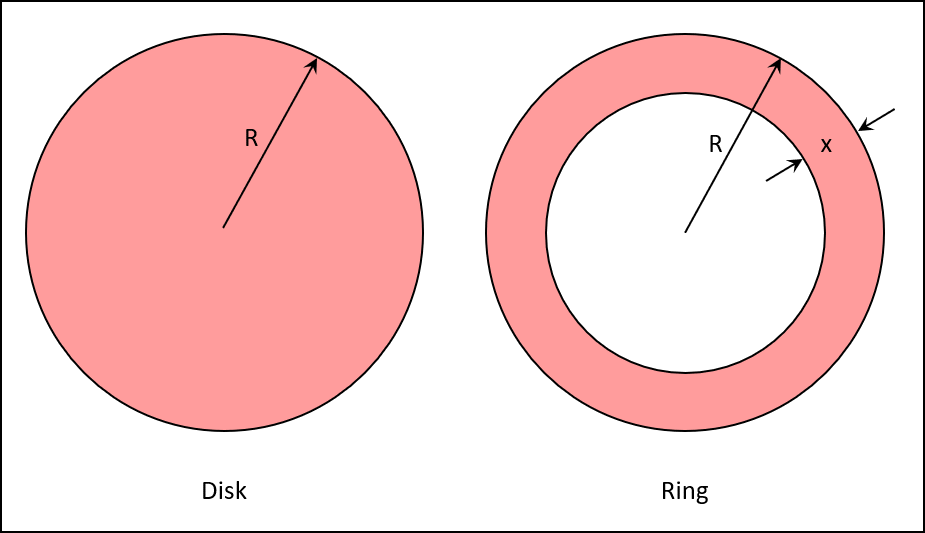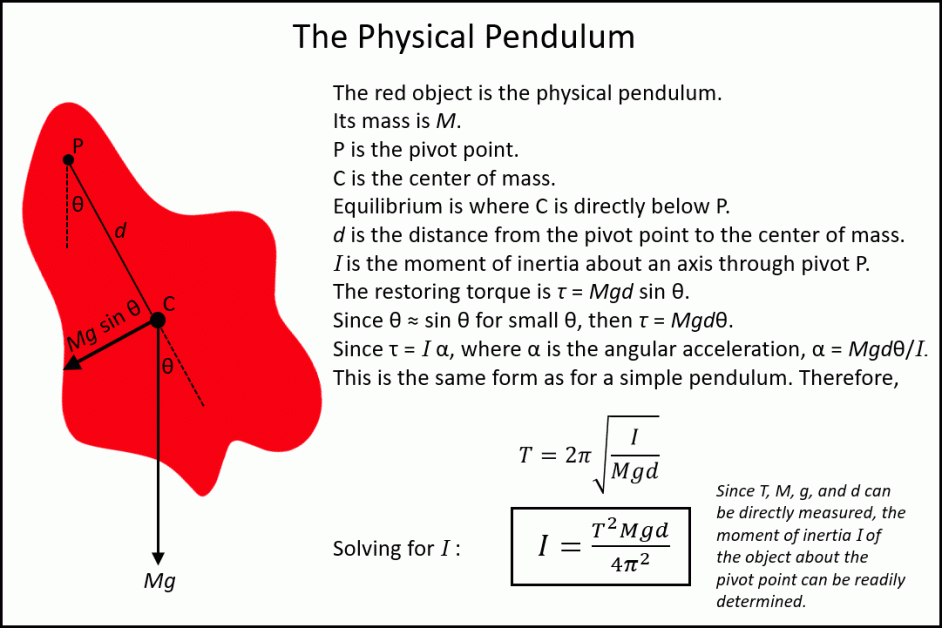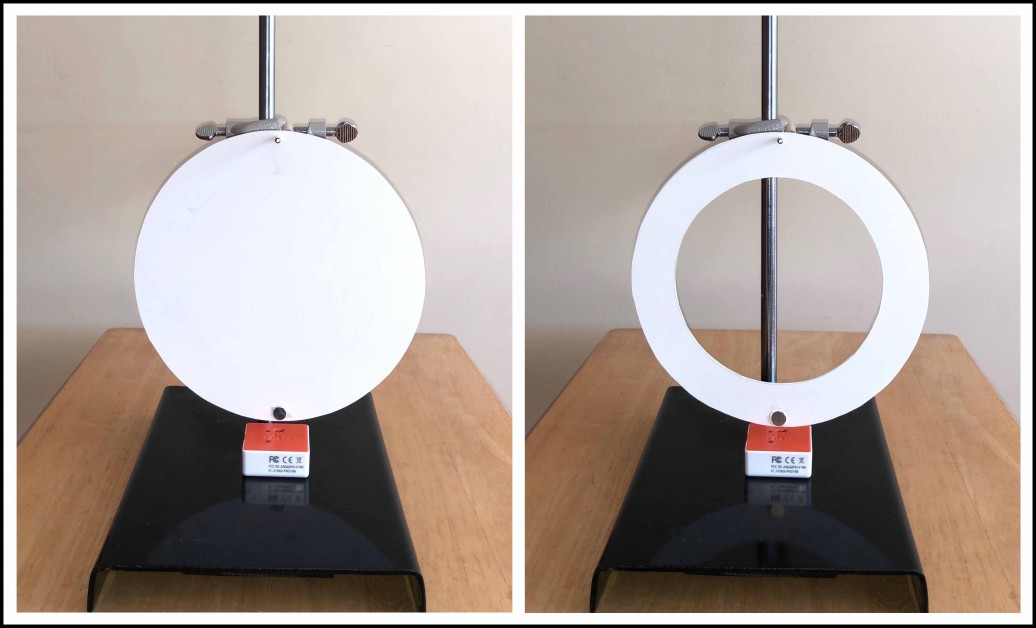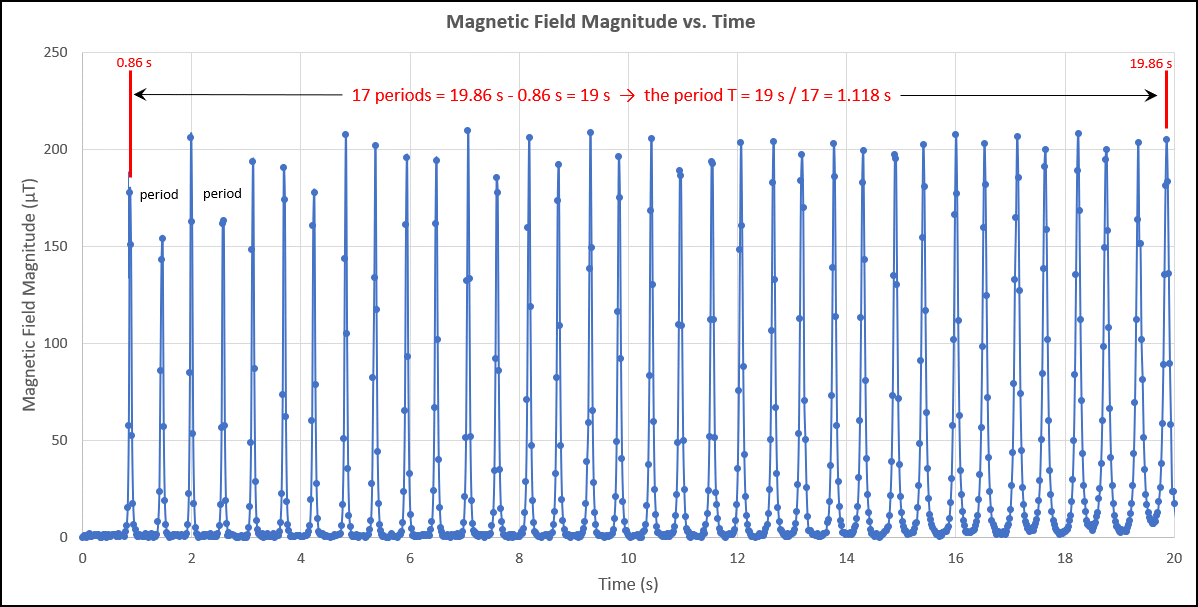Introduction to Moment of Inertia
There are numerous analogies when comparing linear and rotational motion. At the heart of these comparisons lie the concepts of mass on one hand and moment of inertia on the other. In addition to being a property of any physical object, mass is a measure of the resistance of an object to acceleration when a net force has been applied to the object. Newton's Second Law of Motion expresses this in the familiar equation F = ma. By analogy, the moment of inertia of any rigid object is a measure of its resistance to angular acceleration about an axis when a torque is applied to the object. This is expressed by the equation τ = Iα .
Moment of inertia can be defined by the equation
![]()
The moment of inertia is the sum of the masses of the particles making up the object multiplied by their respective distances squared from the axis of rotation. For continuous rigid objects, the equation would be similar but making use of integrals instead of a sum. It should be noted that by the definition, the moment of inertia of a body depends not only on the particular axis on which it rotates, but also on its shape and the way in which its mass is distributed.
Task #1 -- Prepare Planar Disk and Ring with Identical Masses
In this lesson you will be comparing the moments of inertia of two objects with identical masses. You will begin by making use of your maker skills as well as some basic math skills, including algebra and geometry. You will construct two planar objects from card stock paper. One of the objects will be a circular disk of radius 3.5". The other object will be a ring whose outer radius is also 3.5", but whose mass is identical to the mass of the disk. Figure 1 shows a diagram with two such objects.

You want to determine the thickness x of the ring, such that when two such concentric rings are taped together, the mass of the disk will be identical to the mass of the pair of concentric rings. You will cut the disk and the two rings from three pieces of card stock paper. You can assume that the card stock papers are of equal thickness with uniform mass distribution.
Okay, now apply those math and geometry skills to determine the value of x! Then cut out the planar objects from card stock paper and assemble your ring. If you have done your math correctly, the disk and assembled ring should be very close to the same mass when placed on a balance.
Task #2 -- Determine the Period for the Disk and Ring Pendulums
Now that you have your two objects of identical shape but with different mass distributions, you are ready for the first step in determining their moments of inertia. You will treat each object as a physical pendulum--any rigid body that swings in a vertical plane about an axis through the body. Figure 2 shows an arbitrary physical pendulum and its physical theory. The equation in the box allows determining the moment of inertia I of any object about any specific pivot point on that object. T, G, and d are all measurable, and g is known.

You will measure the period T with PocketLab's magnetometer. A tiny magnet taped to the bottom of the physical pendulum will cause a sudden peak in magnetic field magnitude each time it passes by PocketLab while the pendulum swings back and forth. Figure 3 shows pictures of the experiment setup for your two objects of identical mass. In both cases, similar pivot points were selected--pivot points close to the edge of the object. The pendulums are swinging from a metal rod that passes through small holes punched in the pendulums. Use of a metal rod is desirable and helps to keep the pivot point low in friction.

To clarify the pivoting mechanism, Figure 4 shows an oblique view of the apparatus. The pivot is a thin metal rod that has been clamped to a ring stand. A wood dowel rod (or something similar) is used as well, since the clamp screw does not screw tight enough to pinch the metal rod to the clamp. Safety goggles should be worn to prevent any possibility of being poked in the eye by the thin metal rod.

Success in this experiment requires precise measurement of the period T of each of your two pendulums. PocketLab allows calculation of the period of the physical pendulum much more accurately than possible with a stop watch. The use of PocketLab for this purpose eliminates errors associated with reaction times in starting and stopping a stop watch. PocketLab should also be set to the highest data rate possible (50 points/second). Make sure that you measure the time for several period and then find the average. Figure 5 shows how this can be accomplished.

You should now be all set to measure the periods of your two physical pendulums. This data is crucial for success in this experiment!
Task #3 -- Compute the Experimental Moments of Inertia
Now that you have determined the period for your two physical pendulums, you are ready to compute the experimental moments of inertia using the boxed equation at the bottom of Figure 2. You will need to measure the mass of each pendulum. (Remember that the masses should be very close to the same value!) You also need to measure the distance from the pivot point to the center of mass of each pendulum. You can use the accepted value of 9.81 m/s/s for the acceleration g of gravity. Be sure to express all measurements in the MKS (meter-kilogram-second) system. What is the MKS unit of measure for moment of inertia? (Hint: Look at the defining equation for moment of inertia.)
Task #4 -- Determine the Theoretical Moments of Inertia
Tables of theoretical moments of inertia of a variety of shapes about their center of mass are readily available on the Internet. These theoretical moments of inertia are determined by the use of integral calculus, the details of which are not important in our investigation. Figure 6 summarizes the theoretical moment of inertia equations about the center of mass for a planar disk and ring. Our disk and ring, however, were not rotating about there respective centers of mass. They were rotating about an axis very close to their outer edges. Remember that the moment of inertia depends not only on the mass and how it is distributed, but also on the particular axis on which it rotates.
As it turns out, there is a simple and extremely useful theorem, known as the Parallel-Axis Theorem, that expresses the relationship between the moment of inertia I of an object about any any axis and its moment of inertia with respect to a parallel axis through the center of mass. If Ic is the moment of inertia about the center of mass, m is the mass of the object, and w is the distance between the two axes, this theorem tells us that the moment of inertia I is given by the equation
![]()
Use the parallel axis theorem along with some algebra and the equations in Figure 6 to determine equations for the moment of inertia about a point near the edge of a planar disk and ring. If your axes are very close to the outer edge of the disk and ring, then you can assume that w is equal to the outer radius.
Finally, compute the theoretical values for these moments of inertia from your equations.

Task #5 -- Determine the Percent Difference Between the Experimental and Theoretical Moments of Inertia
Comparisons should be expressed as the percent difference between your experimental and theoretical moment of inertia about the axes near the edges, based upon a fraction of the theoretical moment of inertia. The percent difference would be negative in the event that your experimental result is less than the theoretical, and positive if the experimental result if greater than the theoretical.
Task #6 -- Compare the Disk and Ring Moments of Inertia and Discuss Reasons for Any Difference
Is your experimental moment of inertia of the ring about its edge axis greater than the moment of inertia of the disk about its edge axis? It should be if the period for the ring was longer than the period of the disk. Provide a discussion that intuitively suggests that the moment of inertia of the ring should be greater than that of the disk.
Additional PocketLab Lessons that Deal with Moment of Inertia
Rotational Dynamics of a Falling Meter Stick
PocketLab Voyager: A Flywheel Experiment
PocketLab Voyager: Moment of Inertia and Conservation of Angular Momentum
Rotational Motion: Moment of Inertia
Physical Pendulum: Finding Moment of Inertia

